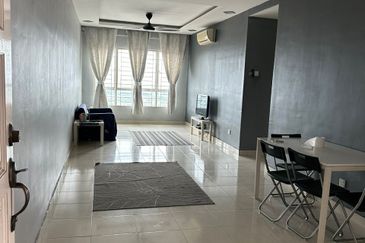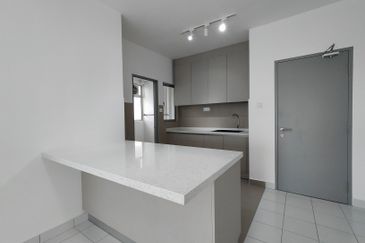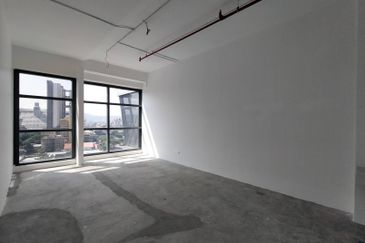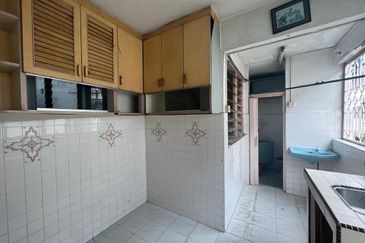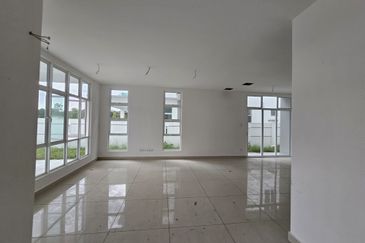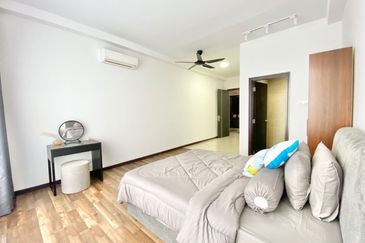Lim thought he had everything planned out. After years of saving for a down payment, he summoned up enough courage to sign the sale and purchase (S&P) agreement for a river fronting bungalow in Banting, Selangor. He pictured lush green spaces for his grandchildren to frolic in and a river in which he could fish — an ideal retirement home close to nature and away from the hustle and bustle of the city.
Now past his retirement age, Lim is nowhere close to living in his dream home 10 years on. Work on the bungalow stopped only a few months after it started. Along the way, some buyers, including Lim, decided to stop financing their home loan, which has led to legal action being taken against them by the financier.
Many neglected projects go unnoticed until the completion date is very close. By then, several years would have passed and the building would be in a sorry state.
There is, however, hope that such projects may be revived. White knights can come in the form of other property developers or the appointed liquidators themselves.
 One such liquidator is Rimbun Corporate Advisory Sdn Bhd, which has been actively reviving and rehabilitating abandoned housing and commercial projects in recent years. Over the past 30 months, the company has worked closely with the Rehabilitation of Abandoned Project Division (established in 2009) under the aegis of the Ministry of Housing and Local Government.
One such liquidator is Rimbun Corporate Advisory Sdn Bhd, which has been actively reviving and rehabilitating abandoned housing and commercial projects in recent years. Over the past 30 months, the company has worked closely with the Rehabilitation of Abandoned Project Division (established in 2009) under the aegis of the Ministry of Housing and Local Government.
“In the past, the first thing a receiver and manager liquidator did was to liquidate a company in distress, sell off its assets and pay off creditors. Eventually, the government realised that doing this was too time-consuming and burnt a hole in everyone’s pocket,” says Rimbun managing principal Kumar Nathan.
He adds that this also resulted in innocent purchasers losing sight of their “dream home” since the project is sold to a third party who has no obligation to honour contracts signed with the previous developer. To add insult to injury, purchasers have to continue honouring their loan obligations.
 To prevent this from happening, Rimbun and a handful of liquidators in the country with relevant experience and expertise were brought in to rehabilitate certain housing projects. To date, Rimbun has revived and handed over properties, or identified white knights to take over projects and refund payments, in over 10 projects involving 1,500 purchasers.
To prevent this from happening, Rimbun and a handful of liquidators in the country with relevant experience and expertise were brought in to rehabilitate certain housing projects. To date, Rimbun has revived and handed over properties, or identified white knights to take over projects and refund payments, in over 10 projects involving 1,500 purchasers.
“We are currently working closely with the ministry to revive another 15 projects involving 3,800 purchasers and expect to progressively rehabilitate and hand over these projects over the next 18 months,” Kumar tells City & Country.
The figures and the law
From 1990 to 2005, the ministry’s records show that 261 licensed projects involving 88,410 houses in Peninsular Malaysia were abandoned, affecting 58,685 buyers. Selangor had the highest number of abandoned projects — 63 involving 32,987 houses affecting 22,480 buyers.
As at July 15, 2011, there were 34 abandoned projects involving 16,873 units and affecting 11,024 buyers. The majority was in Selangor with 19 abandoned projects with 9,482 units and 6,310 buyers.
The fall in number was due to the government’s efforts to revive some of these projects. In Budget 2012, an allocation of RM63 million to revive 1,270 abandoned houses was proposed.
However, Kumar points out that the figures released are only for residential licensed projects under the purview of the ministry. “We estimate the real figures to be higher because we have observed quite a number of unlicensed projects in the country.”
Kumar adds that nationwide, 195 unlicensed projects have been identified to date, although with no definitive mechanism in place to capture data on this, the figure could be much higher. A task force has since been set up at the Housing and Local Government Ministry to establish the actual figure.
To obtain licensing, developers need to go through two parties — the local authorities and the ministry. Developers have to first contact the local authorities for approval on matters such as the development order and building plans.
Following the approval, they need to get their licence and advertising permits from the ministry. In many cases of unlicensed projects, the developers had sought the approval of the local authorities but neglected to obtain compliance from the ministry or make a deposit in the Housing Development Account.
Prior to starting work on a project, the law states that the developer has to make a requisite deposit of RM200,000 in the Housing Development Account, which is refundable upon project completion. Following pressure from numerous parties, the government announced in 4Q2011 that the amount would be increased to 3% of construction cost.
During the construction of the project, the sum serves as an insurance for the Housing and Local Government Ministry, which acts as a source of funding if the developer abandons the project. The proposed 3% deposit can, to a large degree, assist in the revival efforts by the government compared with the previous insignificant sum of RM200,000. Upon project completion, the 3% is fully refunded by the Controller of Housing to the developer.
Although Section 5 of the Housing Development (Control and Licencing) Act 1966 (Act 118) prohibits housing development to be undertaken except with a licence and Section 18 of the same Act imposes fines of between RM250,000 and RM500,000 and/or imprisonment not exceeding five years, unlicensed development has continued to flourish over the years. How have unlicensed developers managed to get off scot-free after all the problems they caused?
“This could primarily be attributed to a lack of understanding and coordination between the various stakeholders. There had also been ineffective enforcement by the ministry in the past, although this has since been beefed up. It would be interesting to see how the courts decide on loans furnished by banks for unlicensed projects as it is essentially funding an activity not permitted by law and hence ‘illegal’,” Kumar says.
He adds that apart from the ministry and banks, there has also been negligence on the part of local authorities, lawyers, architects and consultants that dealt with the developers without checking their licence.
Previously, no penalties were imposed on banks for their oversight. It was only last year that the court imposed a rule that required banks to get the consent of purchasers before releasing the remaining undisbursed amount from the loan to developers if the project is not completed within the time frame stipulated in the S&P agreement.
The deposit of 3% of the gross development cost of a project, from a previous insignificant sum of RM200,000, is an improvement. But if consumers have to pay from 5% to 10% of the total price to secure a home, is a 3% deposit for developers enough?
“Well, it is a progressive move on the government’s part. We hope to see more mechanisms put in place and most importantly, continuous implementation and tighter enforcement,” Kumar says.
Reviving a site
Once a project has been identified for rehabilitation, the initial course of action is to carry out due diligence. In this study, the legal, technical and commercial aspects related to the rehabilitation of a said project will be evaluated and a report furnished to the ministry on the proposed course of action.
There are essentially three ways in which rehabilitation can be funded.
The project could be “self-funded”, namely the cost to rehabilitate could be financed by balance drawdown from the end financier. Here, the purchasers need not “top up” anything extra for the rehabilitation.
The second mode involves some element of “top-up” by the purchasers, which could range from 10% to 30% of the S&P price. This normally relates to higher-end properties in good locations where their value has appreciated, and the top-up is only required to be paid at the time of vacant possession.
The third mode of funding — which is done on a selective basis and currently limited to licensed low and medium-low residential projects, namely units costing less than RM100,000 — relates to funding “project shortfall” by the Housing and Local Government Ministry. If the ministry is funding the project shortfall, purchasers need not pay anything extra, apart from their S&P amount.
One of the requirements for government funding is for the company to be wound up and a liquidator to be appointed to avoid any impression of a bailout. The government will then carry out a tender exercise among its present pool of 65 pre-qualified contractors to select a suitable one.
Apart from provision of funding on a selective basis, the ministry is actively engaged in the rehabilitation process by being the intermediary in resolving issues with the local authorities, utility providers, financiers, consultants and other technical agencies.
There are three parties involved in the rehabilitation process: the rehabilitating contractor, the liquidator (who takes on the role of the developer) and finally the government (whose role is to facilitate funding and monitoring while dealing with the local authorities, banks and technical agencies).
Kumar says that the government’s main focus is to rehabilitate licensed low and medium-cost residential projects. Homes below RM42,000 are labelled as low cost and those below RM100,000 are labelled as low-medium cost. “Of course they are classified as per original sale and purchase price,” Kumar explains.
Internally funded projects
He comments that the model has been working well in the peninsula. Not surprisingly, the Sarawakian authorities recently sought the ministry’s advice to rehabilitate some projects in their state.
So what will happen to mid to higher-end homes that have been abandoned? After all, the government will facilitate but will not provide funding for residential units above RM100,000. In certain cases, buyers have to top up additional amounts, especially when there has been a huge hike in building material prices.
All hope is not lost though, as Kumar cites Rimbun’s experience. “We have already rehabilitated two projects without any government funding or additional top-up from the buyers. It was all done through internal funding, gathered from the accumulation of all the buyers’ past payments, the money in the developer’s account and sale of the remaining units.”
In such cases, buyers will usually make some compromises such as waiving their late delivery claims. Designs and materials used may have to be changed as well to reduce cost.
 Rimbun’s first internally funded project was a 240-unit condominium called Putra Intan in Dengkil, Selangor, which it successfully handed over in December 2010. Rimbun then proceeded to start work on reviving 726 units of 2-storey link houses at La Cottage, Puchong. “We are executing the development phase by phase. To date, we have handed over one of the four phases totalling 178 units. The rest of the 548 units will be released complete with CFO [certificate of fitness for occupation] in the second quarter of this year,” Kumar says.
Rimbun’s first internally funded project was a 240-unit condominium called Putra Intan in Dengkil, Selangor, which it successfully handed over in December 2010. Rimbun then proceeded to start work on reviving 726 units of 2-storey link houses at La Cottage, Puchong. “We are executing the development phase by phase. To date, we have handed over one of the four phases totalling 178 units. The rest of the 548 units will be released complete with CFO [certificate of fitness for occupation] in the second quarter of this year,” Kumar says.
He adds that in certain cases, the buyers need to top up about RM15,000 to RM20,000 before construction can start. “With that said, property values have gone up about RM100,000 in the last few years. Hence, these buyers pay up quite happily.”
For projects which are not viable, the liquidator will try to find a white knight to acquire them for new development purposes. Rimbun will then help to channel the acquisition money from the white knight to the original buyers.
So what are the major challenges faced by rehabilitators? Kumar believes their biggest enemy is funding, compliance time, and the damage caused by nature. In all cases, a project is taken on an “as is where is” basis with all the defects and shortcomings included. As a rule of thumb, authorities do not impose new conditions because that could derail the rehabilitation process.
“The ministry facilitates the revival process in overcoming what at times amounts to unreasonable requests by local authorities or utility providers. Although they [the government] have laid certain guidelines and ground rules as to how we can address abandoned projects, every case is different.
The level of derelication differs, the problems and issues faced by the stakeholders vary,” says Kumar, who adds that this business is always a learning process because no matter how much analysis has been done on the site, they would frequently encounter unprecedented issues and problems once they actually start groundwork.
He says that to ensure the project funded by the government doesn’t get abandoned a second time, the government has come up with a consumer protection mechanism. “According to the rules, the rehabilitating contractor will only be paid once the certificate of fitness is out.”
Advice for home purchasers
Kumar warns that constant vigilance should be practised, especially with the current global financial turbulence. “If the economic situation (in Europe and the US) doesn’t improve anytime soon, we will be bracing ourselves for more foreclosures and abandoned projects.”
However, he points out that consumers can’t always put all the blame on the same few stakeholders. “Malaysian home purchasers have to learn to be more vocal and proactive. We should always check with the ministry to ensure that the developer is legit before signing anything.
“After purchasing a unit, buyers must always keep close tabs on the progress on their homes by occasionally visiting the construction site.”
He says the laid-back nature of Malaysians, coupled with the lack of understanding and awareness of their own rights, could be a disastrous combination.
This article appeared in City & Country, the property pullout of The Edge Malaysia, Issue 908, April 30-May 6, 2012
TOP PICKS BY EDGEPROP
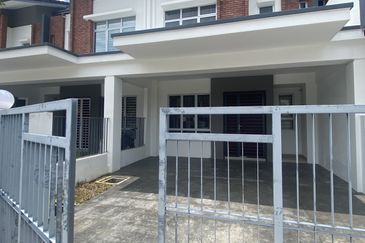
Livia @ Bandar Rimbayu
Telok Panglima Garang, Selangor

Chimes @ Bandar Rimbayu
Telok Panglima Garang, Selangor
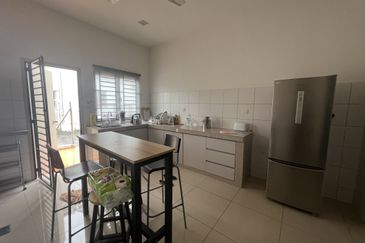
Penduline @ Bandar Rimbayu
Telok Panglima Garang, Selangor

Penduline @ Bandar Rimbayu
Telok Panglima Garang, Selangor

Robin @ Bandar Rimbayu
Telok Panglima Garang, Selangor
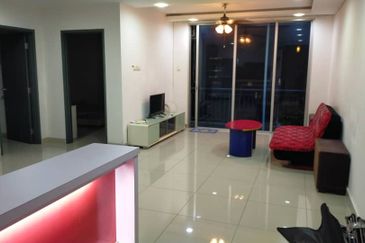
D'Ambience Residences (Ikatan Flora), Bandar Baru Permas Jaya
Permas Jaya/Senibong, Johor

D'Carlton Seaview Residences (Seri Mega)
Masai, Johor

Apartment Tanjung Puteri Resort
Pasir Gudang, Johor

